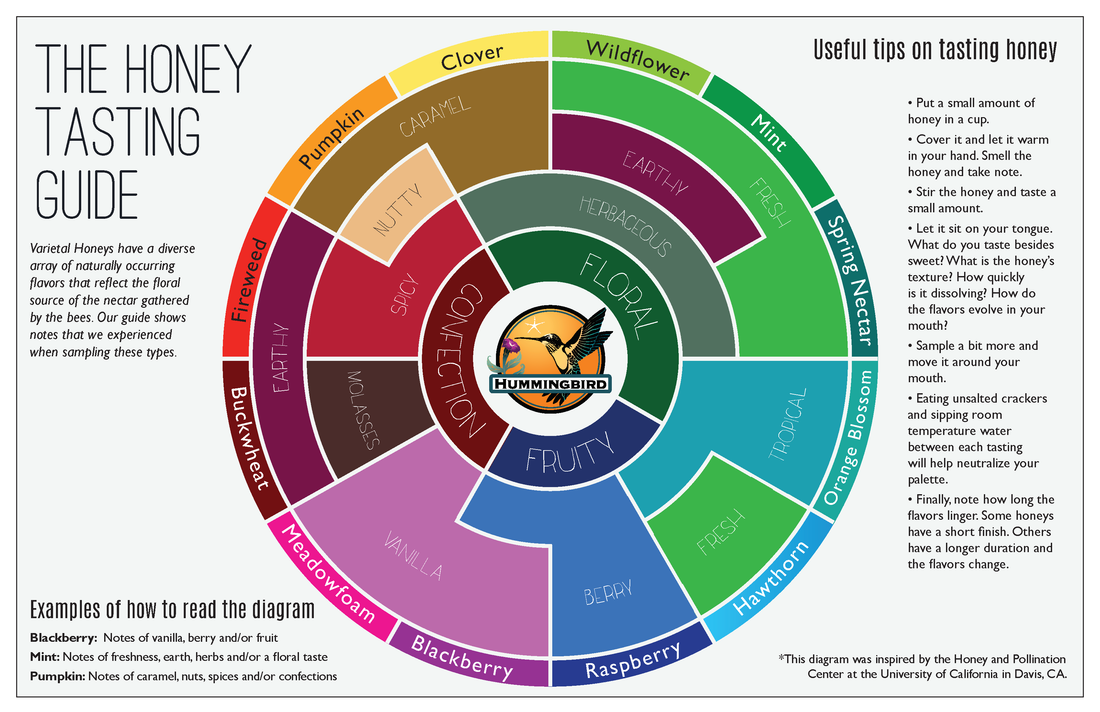There are more than 300 unique types of honey available in the United States, each with a different flavor and color that comes from a distinct floral source. Honey is produced in every state, but some varieties are only produced in a few regions. Varietal honey, also known as mono-floral honey, is made primarily from the nectar of one type of flower. Beekeepers aid this process by strategically placing their hives in a field or orchard of a specific flower blossom. Pollen in honey is traceable to its floral source and is sometimes used to determine the variety of honey when it is not as obvious.
Color, flavor, and the aroma of honey may differ depending on the nectar source of flowers visited by the honey bee. The colors may range from transparent to dark brown. Flavor may vary from delectably mild to distinctively bold. The aroma of the honey may resemble the flower.
Honey will also vary in its texture. It may come in a variety of forms including liquid, whipped and comb. Free of any crystals or wax, liquid honey is extracted from the comb in the hive by centrifugal force, gravity or straining. Whipped honey is finely crystallized so that it is creamy and spreadable. Comb honey is honey that comes as it was produced — in the honey bee’s wax comb.
The color and flavor of varietal honeys vary depending on production region as well as annual climate and soil conditions. Even the same flower blooming in the same location may produce slightly different nectar from year-to-year depending on temperature and rainfall.
The National Honey Board Recommends the following instructions for tasting honey: spoon out a small amount of honey (about 1/2 of a teaspoon). Take in the aroma and let the honey melt on the front of your tongue. As it melts, the honey will spread to the back and sides of the tongue bringing out nuances in flavor. Eating unsalted crackers and sipping room temperature water between each tasting will help neutralize your palate.
At Hummingbird, we work with small family apiaries in Oregon, California and Washington to supply high quality, unfiltered and raw honey. Our raw honey is never heated above 115 degrees. We usually carry around 10 different varieties depending on the availability in our region. The honey varieties picked out for the wheel on page 4 and 5 are honeys we currently carry. We hope the wheel can be used to encourage vocabulary to express a personal honey sensory experience. Each word on the wheel has been used by tasters to describe a broad selection of honeys.

